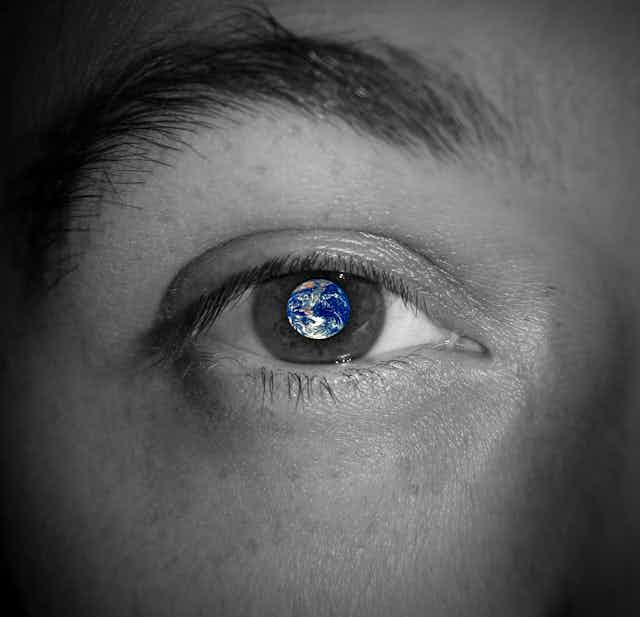Has global warming stalled? This question is increasingly being asked because the local weather seems cool and wet, or because the global mean temperature is not increasing at its earlier rate or the long-term rate expected from climate model projections.
The answer depends a lot on what one means by “global warming”. For some it is equated to the “global mean temperature”. That keeps going up but also has ups and downs from year to year. More on that shortly.
Why should it go up? Well, because the planet is warming as a result of human activities. With increasing carbon dioxide and other heat-trapping greenhouse gases in the atmosphere, there is an imbalance in energy flows in and out of the top of the atmosphere: the greenhouse gases increasingly trap more radiation and hence create warming. “Warming” really means heating, and this can exhibit itself in many ways.
Rising surface temperatures are just one manifestation. Melting Arctic sea ice is another. So is melting of glaciers and other land ice that contribute to rising sea levels. Increasing the water cycle and invigorating storms is yet another. But most (more than 90%) of the energy imbalance goes into the ocean, and several analyses have now shown this. But even there, how much warms the upper layers of the ocean, as opposed to how much penetrates deeper into the ocean where it may not have much immediate influence, is a key issue.
The ups and downs of global temperature
My colleagues and I have just published a new analysis showing that in the past decade about 30% of the heat has been dumped at levels below 700m, where most previous analyses stop.
The first point is that this is fairly new; it is not there throughout the record. The cause of the shift is a particular change in winds, especially in the Pacific Ocean where the subtropical trade winds have become noticeably stronger, changing ocean currents and providing a mechanism for heat to be carried down into the ocean. This is associated with weather patterns in the Pacific, which are in turn related to the La Niña phase of the El Niño phenomenon.
The second point is that we have found distinctive variations in global warming with El Niño. A mini global warming, in the sense of a global temperature increase, occurs in the latter stages of an El Niño event, as heat comes out of the ocean and warms the atmosphere. The ocean’s temperature is also affected by volcanic eruptions, which also affect the perceptions of global warming.
Normal weather also interferes by generating clouds that reflect the sunshine, and there are fluctuations in the global energy imbalance from month to month. But these average out over a year or so.
Another prominent source of natural variability in the Earth’s energy imbalance is changes in the sun itself, seen most clearly as the sunspot cycle. From 2005 to 2010 the sun went into a quiet phase and the warming energy imbalance is estimated to have dropped by about 10 to 15%.
Some of the penetration of heat into the depths of the ocean is reversible, as it comes back in the next El Niño. But a lot is not; instead it contributes to the overall warming of the deep ocean. This means less short-term warming at the surface, but at the expense of greater long-term warming, and faster sea level rise. So this has consequences.
Global warming is here to stay
Coming back to the global temperature record, one thing is clear. The past decade is by far the warmest on record. Human induced global warming really kicked in during the 1970s, and warming has been pretty steady since then.

While the overall warming is about 0.16°C per decade, there are three ten-year periods where there was a hiatus in warming, as the graph above shows, from 1977 to 1986, from 1987 to 1996, and from 2001 to 2012. But at each end of these periods there were big jumps. We find exactly the same sort of flat periods in climate model projections, lasting easily up to 15 years in length.
Focusing on the wiggles and ignoring the bigger picture of unabated warming is foolhardy, but an approach promoted by climate change deniers. Global sea level keeps marching up at a rate of more than 30cm per century since 1992 (when global measurements via altimetry on satellites were made possible), and that is perhaps a better indicator that global warming continues unabated. Sea level rise comes from both the melting of land ice, thus adding more water to the ocean, plus the warming and thus expanding ocean itself.
Global warming is manifested in a number of ways, and there is a continuing radiative imbalance at the top of atmosphere. The current hiatus in surface warming is temporary, and global warming has not gone away.

